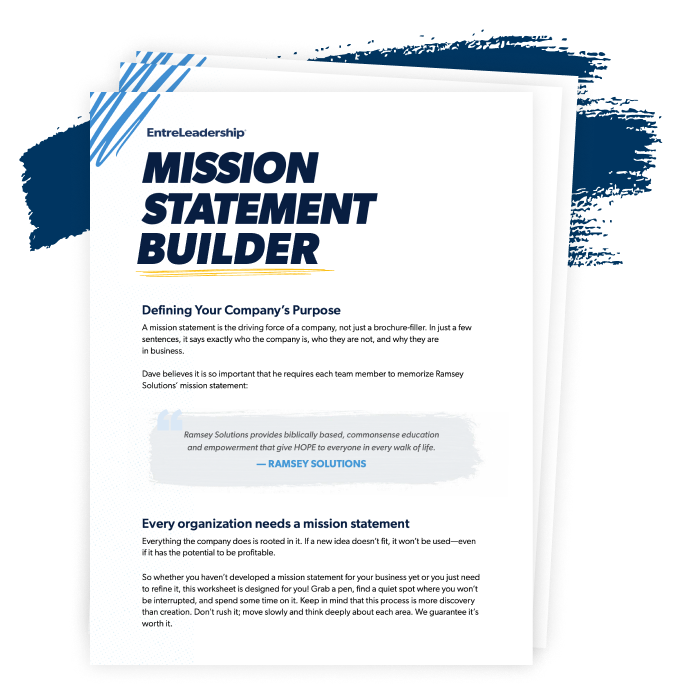The Strategic Planning Process You Can’t Afford to Skip
7 Min Read | Oct 21, 2025

Key Takeaways
- Start your strategic planning process with reflection, not ideas.
- Revisit your mission, vision and values.
- Ask yourself prep questions centered on wins, losses and insights.
- Review the right data early.
- Send clear prep work and expectations.
It’s the end of the quarter, and you’ve got some strong ideas about what your company should go after next. Time for all your key leaders to gather and make a strategic plan, right?
Not so fast.
The truth is, strategic planning fails when it starts with big ideas instead of grounded, data-informed insights. Too many leaders rush into planning sessions without doing the prep work that makes those sessions meaningful. The result? Long meetings, fuzzy goals and a plan that looks inspiring on a whiteboard but fizzles the minute everyone goes back to work.
If you want your next planning session to drive real results, you have to start with clarity. And that clarity comes from a strategic planning process most leaders don’t even know they’re missing.
So let’s talk about the preplanning process you can’t afford skip and how to get your team ready for it. When you take the time to prepare, you’ll walk into your next session ready to think like leaders, not just react to the moment.
Preparing for a Strategic Planning Meeting
Before your strategic planning meeting, you’ll need to work out logistics like where you’ll meet, who should be in the room, and even what snacks to order. That’s good management, but it’s not strategic preparation.
The prep work we’re talking about is getting your leadership team mentally ready to flesh out a plan for the future and the steps to realize it. Every leader who’s part of your quarterly and annual sessions should come into these meetings with insights, not just ideas.
This takes strategic reflection and review—the kind of focus that sets the stage for productive debate instead of chaos.
Business Strategic Planning: Why Strategic Reflection and Review Come First
Why start with reflection and review? Because you can’t make confident decisions about where you’re going until you understand where you’ve been.
Before your next strategic planning session, take time to look back. Here’s why it matters:
- It grounds your strategy in reality. You can’t fix or build what you haven’t clearly seen.
- It connects the dots. Reflection and review reveal patterns—what’s working, what’s broken and what’s missing.
- It protects your focus. Naming distractions ahead of time forces clarity and keeps the discussion tight.
- It creates alignment. When everyone comes to the table having already wrestled with purpose and direction, you stop wasting time clearing up confusion and start planning the future with unity.
5 Strategic Planning Basics
Maybe you already know how to lead an effective strategic planning session. That’s great! But before you ever set foot in the meeting room, make sure you and your leadership team take time individually to focus on these essentials.
1. Send prep work and set expectations.
If you’re leading the planning session, send a clear prep work email at least a week before the meeting. Include:
- Purpose and outcomes: what this session is (and isn’t) for
- Things to read before: mission, vision and values refresher links; the wins, losses and insights questions you want everyone to reflect on; and last quarter’s goals and results
- Data checklist: exactly which reports to review
- Logistics and norms: strategic session start and stop times, no-device rules, how decisions will be made, and how action items will be assigned
2. Revisit your mission, vision and values.
Walking into strategic planning meeting without a clear mission, vision and set of values in place is like setting out on a road trip without a map. You’ll waste a lot of time and lose direction fast. So make sure they’re all in place to guide decisions and give you a shared purpose to align around.
Your mission, vision and values are the foundation of every strategy conversation. When teams skip over them, they end up pulling in different directions—often with good intentions but conflicting priorities.
So take a fresh look at each one:
- Mission answers why we exist—our purpose.
- Vision paints a picture of where we’re going—a picture of the world when our mission is fully lived out.
- Values define what we stand for—the guiding principles that show how we think, act and make decisions.
A five-minute refresher at the start of the actual meeting won’t repair months of drift. This personal reflection time, though, helps everyone walk in ready to make unified, results-driven decisions (not get sidetracked by philosophical debates).
Get the Free Mission Statement Builder
You don’t have to figure it out alone! Download the easy-to-follow EntreLeadership Mission Statement Builder that will help you write a mission statement that gets you and your team fired up and on the same page.
3. Evaluate the past quarter or year.
To avoid repeating mistakes, spend time thinking about these three key areas before your strategic planning session:
- Wins: What were our biggest wins? What went really well over the past quarter or year? What progress are we most proud of?
- Losses: What didn't go well? Where did we fall short of our goals or miss an opportunity? What created the biggest setbacks?
- Insights: What can we learn from the wins and the losses? What lessons stand out? What needs to change as a result?
When every leader takes time to answer these questions in advance, you all walk into the room with a clear, shared picture of reality. Scattered observations become actionable insights.
4. Identify the biggest opportunities and challenges.
After reflection comes focus. Encourage everyone to think ahead with one clarifying question: “If we only accomplish one thing this year, what would make it a success?”
This question forces trade-offs. It surfaces the core issue or opportunity you believe your business needs to tackle to move forward. You’ll find alignment faster when everyone can connect their view to what’s actually happening in the business.
Pro tip: During the actual strategic planning session, listen for patterns:
- Are multiple leaders pointing out the same bottleneck?
- Is a customer pain point showing up across sales, support and product?
- Is a people issue (capacity, role clarity, leader development) hiding underneath the surface?
Capture those themes so your conversation starts with the truth, not assumptions.
5. Review the right data.
Data informs decisions, but it can’t make them for you. Review the right numbers in advance and arrive ready to share insights (not raw spreadsheets).
Make sure you and every other leader review:
- Marketing and sales metrics
- Budget and financial reports
- Any progress toward your business goals, like desired future details
When data is part of the prep work, your meeting time stays focused on decisions—not catching everyone up.
What Good Preparation Produces Inside the Meeting
Reflection and review are a fork in the road. Skip them, and you’ll create a plan that looks good on paper but solves yesterday’s problem—or no problem at all. Do them, and your plan will be grounded in reality and built to move your business forward.
When you and your team complete the prep work, your actual planning session feels different. You’ll notice:
- Faster alignment: Because everyone did the same reflection and reviewed the same numbers, you spend less time warming up and more time deciding.
- Sharper priorities: The “one thing” exercise (in Step 3 above) exposes what matters most. Pet projects lose their shine.
- Clearer goals: Objectives naturally emerge from the themes in your wins, losses and insights answers and the data briefs.
- Tighter execution: Owners and next steps are easier to assign because the groundwork is already done.
That’s how you turn a long meeting into a strategic milestone.
Put It All Together: Your Preplanning Checklist
When your leadership team is anchored in your mission, vision and values, armed with reflection, and grounded in real data, your strategic plan stops being a wish list and starts becoming a road map your team can actually follow. That kind of clarity doesn’t happen by accident—it starts with the right prep. Here’s your preplanning checklist:
- Send prep work with purpose, things to read before the meeting, norms, and logistics
- Confirm mission, vision and values alignment (or schedule a meeting to create or revise)
- Complete reflection questions
- Prepare “one thing” success answer prepared
- Review data (desired future, marketing and sales, budget and financials)
Take the time to do this prep, and you’ll walk into the room with clarity—not chaos. That doesn’t just make for a smoother meeting—it makes for a stronger business.
What’s Next: Do the Work That Makes Strategy Work
Ready to lead with clarity? Make strategic planning one of your top priorities and regular business rhythms.
Download the EntreLeadership Elite™ free Strategic Reflection Worksheet and set up your next strategic planning meeting for success.

